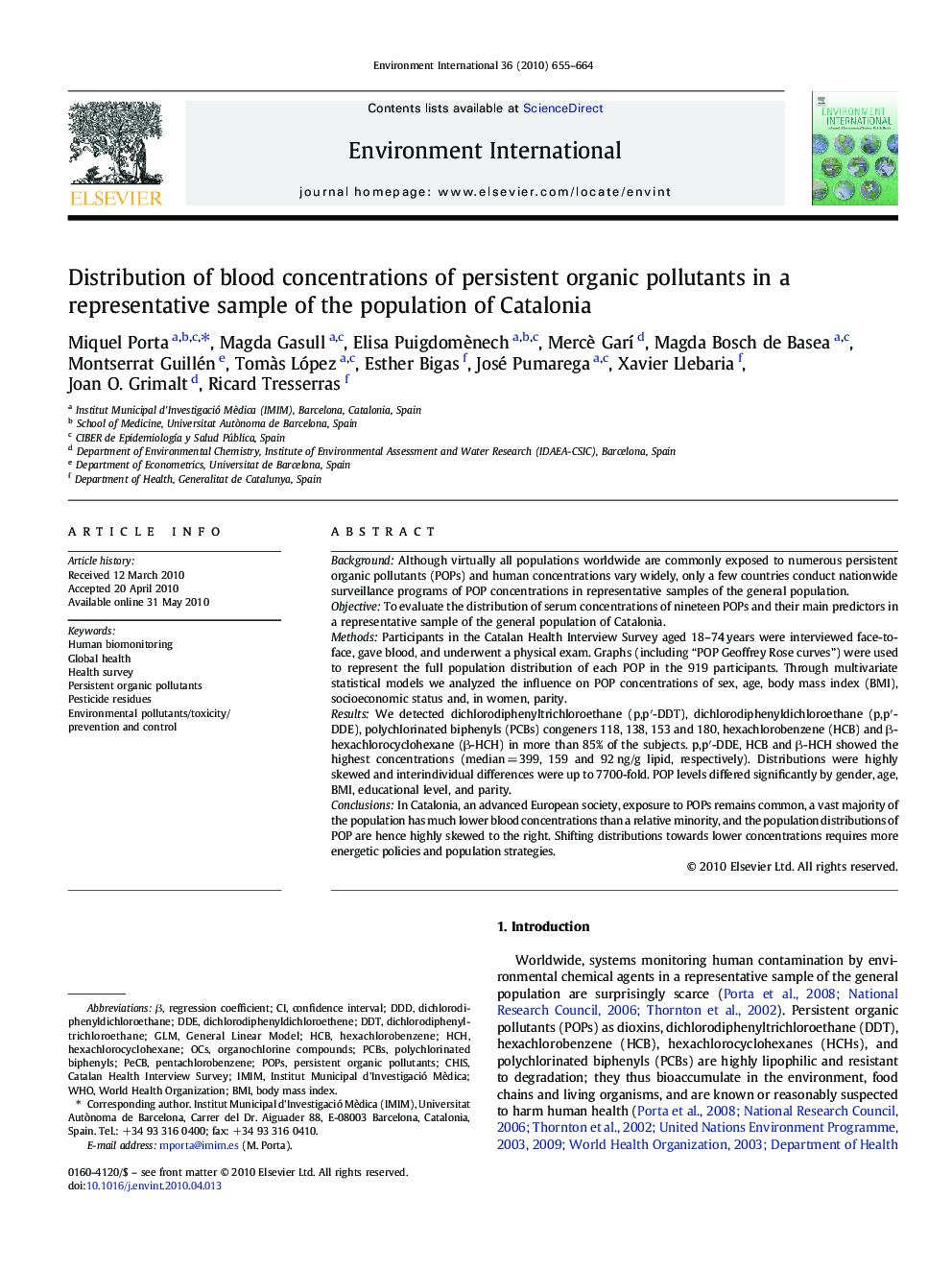| کد مقاله | کد نشریه | سال انتشار | مقاله انگلیسی | نسخه تمام متن |
|---|---|---|---|---|
| 4423365 | 1308822 | 2010 | 10 صفحه PDF | دانلود رایگان |

BackgroundAlthough virtually all populations worldwide are commonly exposed to numerous persistent organic pollutants (POPs) and human concentrations vary widely, only a few countries conduct nationwide surveillance programs of POP concentrations in representative samples of the general population.ObjectiveTo evaluate the distribution of serum concentrations of nineteen POPs and their main predictors in a representative sample of the general population of Catalonia.MethodsParticipants in the Catalan Health Interview Survey aged 18–74 years were interviewed face-to-face, gave blood, and underwent a physical exam. Graphs (including “POP Geoffrey Rose curves”) were used to represent the full population distribution of each POP in the 919 participants. Through multivariate statistical models we analyzed the influence on POP concentrations of sex, age, body mass index (BMI), socioeconomic status and, in women, parity.ResultsWe detected dichlorodiphenyltrichloroethane (p,p′-DDT), dichlorodiphenyldichloroethane (p,p′-DDE), polychlorinated biphenyls (PCBs) congeners 118, 138, 153 and 180, hexachlorobenzene (HCB) and β-hexachlorocyclohexane (β-HCH) in more than 85% of the subjects. p,p′-DDE, HCB and β-HCH showed the highest concentrations (median = 399, 159 and 92 ng/g lipid, respectively). Distributions were highly skewed and interindividual differences were up to 7700-fold. POP levels differed significantly by gender, age, BMI, educational level, and parity.ConclusionsIn Catalonia, an advanced European society, exposure to POPs remains common, a vast majority of the population has much lower blood concentrations than a relative minority, and the population distributions of POP are hence highly skewed to the right. Shifting distributions towards lower concentrations requires more energetic policies and population strategies.
Journal: Environment International - Volume 36, Issue 7, October 2010, Pages 655–664